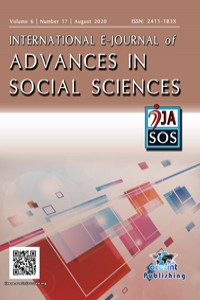NATIONHOOD AND THE QUEST FOR NATIONAL DEVELOPMENT: THE GAMBIA’S EXPERIENCE UNDER THE SECOND REPUBLIC, 1994 – 2015
Abstract
The task of nation-building today in the world is that which carries along all well-meaning modern nation-states, with Gambia as no exemption. This paper examines the nationhood process and effort in the Gambia between 1994 and 2015. It focuses on national development efforts both in the first and second republics. The paper investigates how human, material and ecological resources are harnessed and deployed towards this noble goal, availing enabling policy-thrusts for effective implementation and goal attainments that attract sustainable socio-economic and political development. The paper beams searchlights on the redoubled efforts under the Yahya Jammeh regime and the pragmatic approaches taken to achieve more meaningfully goal-oriented national development strides that pave ways for practical development giants and strides. An inductive and deductive methods of research that are descriptive and fact-finding are employed for empirical and critical explorations. The paper posits that the strategies of the second republic government, which surpass the first republic’s conservatively-constructed approaches under Jawara served as impetus for the accomplishments recorded from 1994 to 2015 in making the Gambia an economic super power through industrialization of the agro-economic structures and processes of the small nation in the sub-Saharan Africa.
References
- Weekend Observer, 2014, by Jawara Sanna, UTG lecturer (Omotosho, O. Felix) commends Gambia’s Political system, ISSN 0796-0832 in www. Observer.gm, Vol.22, No.215, pp.6, 7th-9th, November.
Abstract
References
- Weekend Observer, 2014, by Jawara Sanna, UTG lecturer (Omotosho, O. Felix) commends Gambia’s Political system, ISSN 0796-0832 in www. Observer.gm, Vol.22, No.215, pp.6, 7th-9th, November.
Details
| Primary Language | English |
|---|---|
| Journal Section | Articles |
| Authors | |
| Publication Date | September 14, 2020 |
| Submission Date | May 13, 2020 |
| Published in Issue | Year 2020Volume: 6 Issue: 17 |
Contact: ijasosjournal@hotmail.com
The IJASOS Journal's site and its metadata are licensed under CC BY
Published and Sponsored by OCERINT International © 2015- 2025


